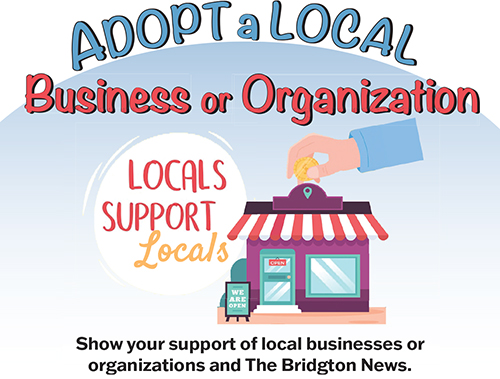Workshop seeks public input regarding road safety
Streets should be safe no matter where you live.
But, how does a community improve road safety?
Vision Zero is leading the charge to find solutions. Vision Zero is a global strategy to eliminate traffic fatalities and serious injuries by changing the way roads are designed.
The Greater Portland Council of Governments, a regional planning agency, is working to create a Vision Zero Action Plan for the towns of Bridgton, Casco, Chebeague Island, Durham, Frye Island, Gray, Harrison, Long Island, Naples, New Gloucester, Pownal, and Sebago.
If you live or work in one of these towns, your input is needed. While Vision Zero has a website where one can take a survey to share viewpoints, another opportunity is to attend a workshop this Saturday, Dec. 2 from 10 a.m. to noon at the Bridgton Public Library.
What roads make you feel unsafe? Join this community workshop to share your insights! There will be a short presentation, mapping activity, food, and more. This workshop is open-house style, so feel free to drop in at a time most convenient for you.
To learn more about this project, visit VisionZeroGreaterPortland.org
What is Vision Zero?
Vision Zero is a concept created in Sweden in 1997 that rejects the idea that traffic fatalities and serious injuries are an inevitable “cost of doing business” and instead sets a goal of eliminating traffic deaths and serious injuries through planning and policy.
The Vision Zero approach has been widely credited with a significant reduction in fatal and serious crashes on Sweden’s roads and has since spread to regions and municipalities across the world.
In the United States, more than 42,000 people are killed in traffic collisions each year. Vision Zero asserts that these tragedies are preventable by diverging from status quo traffic safety ideology seen at the municipal level. Vision Zero recognizes that human error is inevitable, and roadway design.
In 2022, 177 people died in traffic crashes in Maine. The highest number of deaths since 2007. The primary goal of Vision Zero is to eliminate traffic fatalities and severe injuries, which means saving lives and reducing the number of families impacted by the tragic loss of a loved one.
Vision Zero Greater Portland is led by the Greater Portland Council of Governments. However, VZ collaborates closely with an advisory panel of stakeholders, including local municipalities, MaineDOT (Maine Department of Transportation), local and state police, fire and EMS services, and public health departments.
Vision Zero stresses the importance of agency cross collaboration, ensuring input is heard from not only local planners, but also policymakers and public health professionals. Above all else, the movement classifies traffic safety as a public health issue, and one that local leaders and roadway users alike have a responsibility to improve.
But the most critical piece of all is you, the public! Creating safer roads involves everyone, and community input and engagement are invaluable — a good reason to take part in Saturday’s workshop at the Bridgton Public Library.
Vision Zero Project timeline
Launched, Sept.-Oct.
Identify issues (analyzing crash data, public and stakeholder engagement), Nov-Dec
Finding Solutions (identifying priority locations and formulating action steps), Jan-Feb
Drafting Plan (review draft plan with advisory panel and GPCOG committees, seek adoption of the plan by GPCOG Executive Committee)
VZ Core Elements
(Info from the Vision Zero website)
Safer Roads
Roads need to be designed to mitigate human error. Road design that prioritizes safe, healthy, equitable access for all can also reduce the potential for high impact crashes, encourage safe behaviors, and facilitate safe travel for all modes.
Safer Speeds
We need the right speeds for the right contexts, and we need to design roads that encourage people to drive at those speeds. We can also encourage people to drive appropriate speeds through education, outreach campaigns, and enforcement.
Safer People
Whether walking, biking, driving, riding transit, or traveling by another mode, people need to make choices that help them to be safe and arrive at their destinations unharmed. This includes behaviors like wearing a seatbelt, making sure bicycles have reflectors, following the rules of the road, sharing the road, and not driving impaired or distracted.
Safer Vehicles
Vehicles should be designed with safety features and systems to help prevent crashes, and, when they do occur, to minimize the impact of crashes on both occupants and non-occupants.
Post-Crash Care
We can increase crash survivability by ensuring quick access to emergency and trauma care. Good traffic incident management at crash sites provides a safe working environment for first responders. Data collection and analysis informs future road safety decisions.


